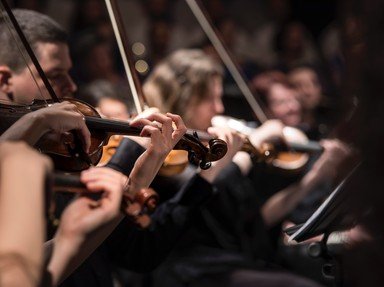Quiz Answer Key and Fun Facts
1. Symphony No. 94 in G major, the "Surprise Symphony"
2. Piano Sonata No. 11, 3rd Movement, "Rondo alla Turca"
3. Orfeo ed Euridice
4. Hungarian Rhapsody No. 2 in C-sharp minor
5. Symphony No. 6 in F major, Op. 68, Pastoral Symphony
6. Concerto Grosso in G minor, Op. 6, No. 8, "Christmas Concerto"
7. Waltz in D-flat major, Op. 64, No. 1, "Minute Waltz"
8. Frühlingsstimmen, Op. 410, "Voices of Spring Waltz"
9. Toccata and Fugue in D minor
10. Wiegenlied ("Lullaby"; "Cradle Song"), Op. 49, No. 4
Source: Author
dersteppenwolf
This quiz was reviewed by FunTrivia editor
agony before going online.
Any errors found in FunTrivia content are routinely corrected through our feedback system.

